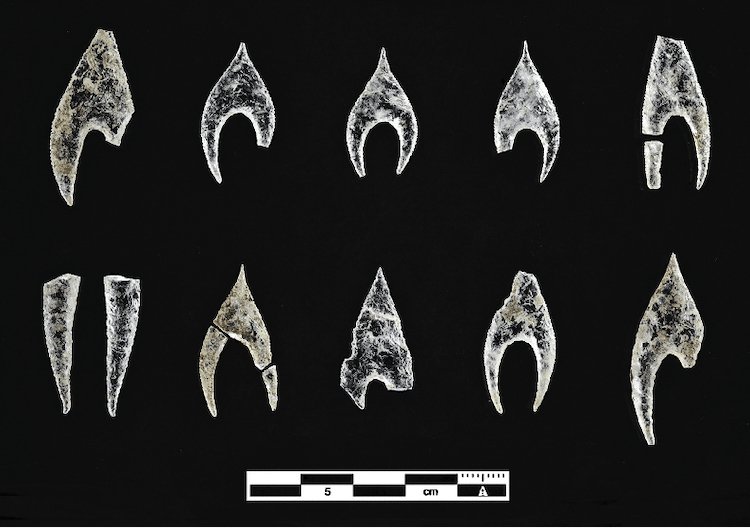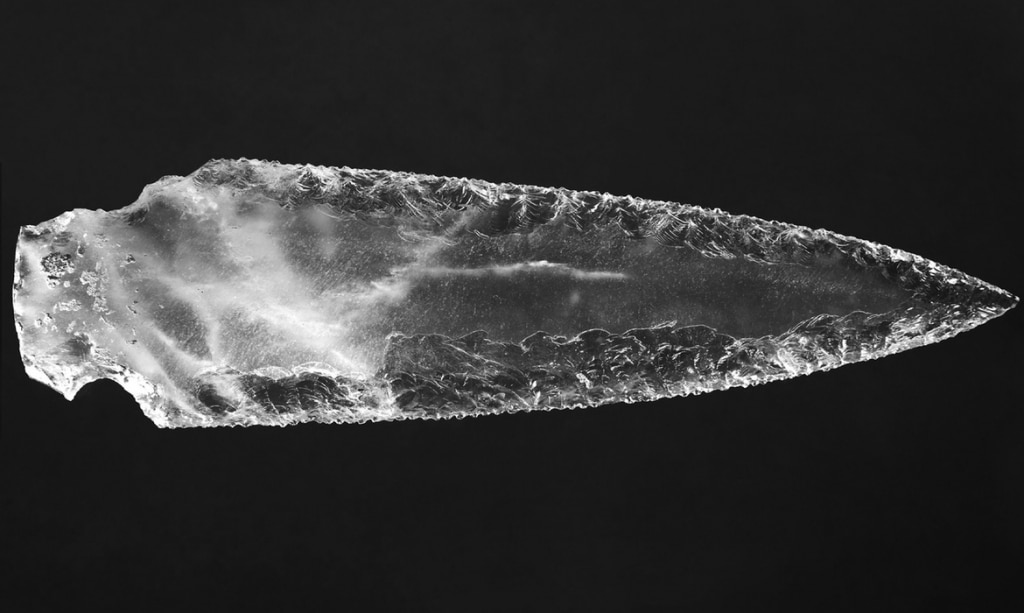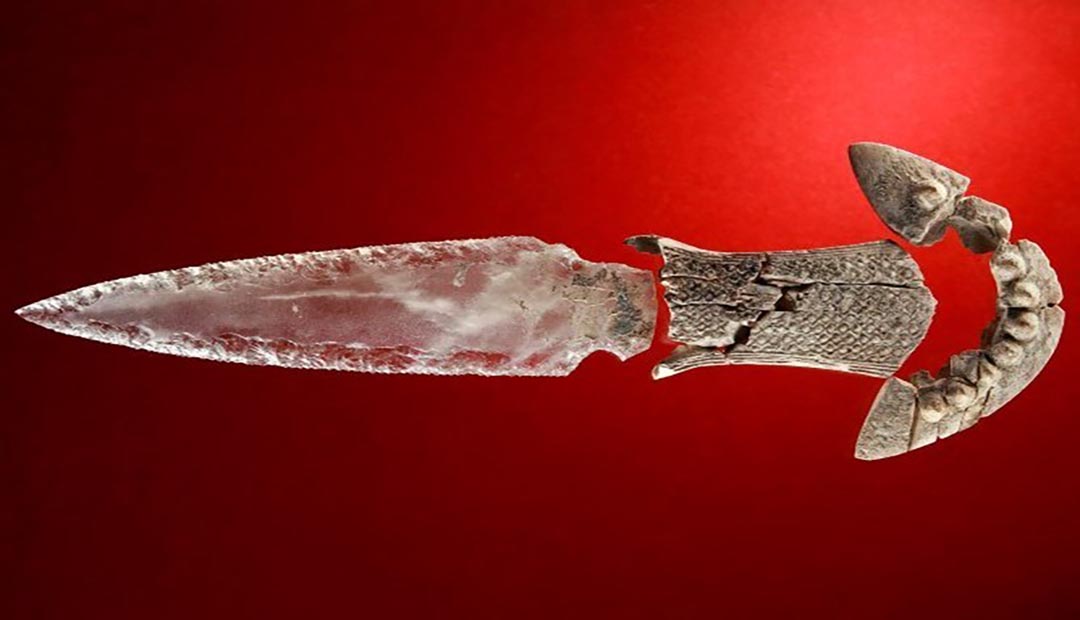Discovery of a 5,000-Year-Old Crystal Dagger Unearthed in Spain’s Ancient Tomb
Inside an ancient tomb near Seville, researchers found the remains of several individuals buried in a ritualistic fashion, as well as a most striking artifact: a quite beautiful dagger made from rock crystal.
The intricately carved crystal dagger has been dated to at least 3000 BCE, making it the “most technically sophisticated and esthetically impressive collection of rock crystal material culture ever found in Prehistoric Iberia,” according to Spanish researchers who investigated the site.

Prehistoric humans in Europe made most of their tools from chert and flint. Tools made by knapping ‘rock crystals’ (macro-crystalline quartz) were far less prevalent, but nevertheless, people developed a technique for their manufacturing that appeared during late prehistory in certain European regions, such as the southwest Iberian Peninsula in the third millennium BCE.
Although rock crystal tools were more difficult to fashion and the raw materials weren’t as abundant as sedimentary rock, prehistoric people likely cherished them due to their social value.
Just as we stand in awe today at their sight, one would imagine that people were even more impressed by them thousands of years ago.

This particularly exquisite rock crystal tool, an 8.5-inch long dagger, was found in one of eight megalithic tombs from Valencina de la Concepción, a site near Seville in Spain that is considered one of the most significant for the study of Copper Age Iberia.
The tomb, known as the Montelirio Tholos, was excavated between 2007 and 2010.
It is a great megalithic construction with a 39-meter (128-foot) corridor leading to the main chamber with a 4.75-meter (15.5-foot) diameter from which, through a narrow corridor, a secondary chamber is accessible.
Researchers found the remains of at least 25 individuals, alongside numerous sumptuous grave goods, including shrouds and clothes made of tens of thousands of perforated beads and decorated with amber beads, as well as many flint arrowheads, found fragments of gold blades, ivory objects, and of course the dazzling crystal core.
The arrowheads, blade, and rock crystal dagger were found at the back of the main chamber. No other objects were found in the rest of the chamber, which is suspicious.
The accumulation of artifacts right next to the main chamber’s access corridor “suggest an offering similar to those discovered in the main corridor, where the arrowheads, although made of lower quality materials, were found in large groups associated with an altar and other offerings (plants),” said researchers at the University of Granada and the University of Seville in a study published in Quaternary International.

At least several females and one male identified within Montelirio tholos are believed to have died due to poisoning.
The remains of the women were arranged in a circular fashion in a chamber next to the bones of the male, who may have been a person of high status. The dagger itself was found in a different chamber “in association with an ivory hilt and sheath.”
There are no sources of quartz of the kind used in the dagger near the site, which suggests the materials were sourced from far afield.
The researchers say this is another reason why these crystal daggers and arrowheads may have been reserved to a few elite individuals who could afford them, having a dual significance.




